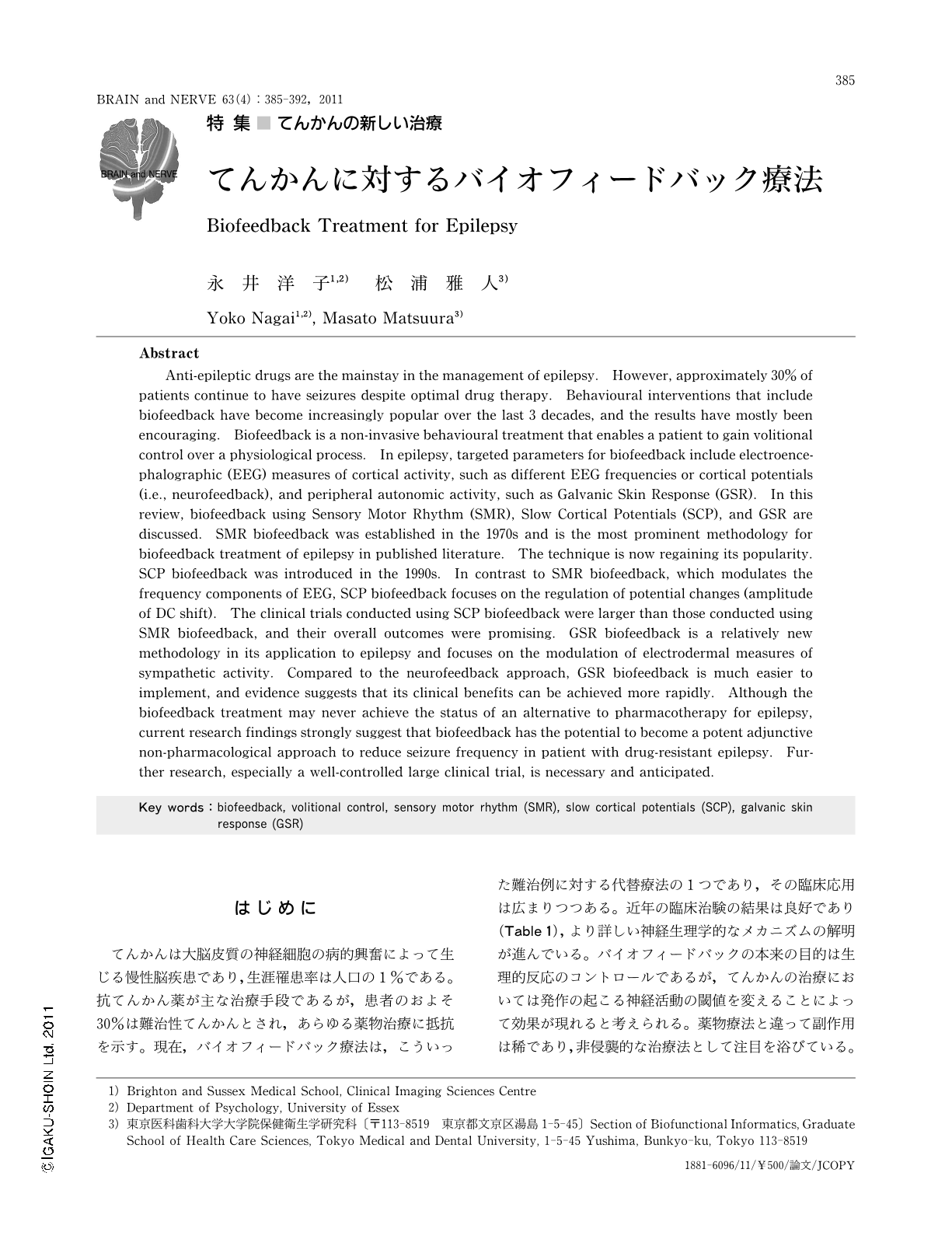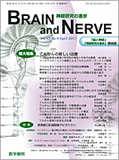Japanese
English
- 有料閲覧
- Abstract 文献概要
- 1ページ目 Look Inside
- 参考文献 Reference
はじめに
てんかんは大脳皮質の神経細胞の病的興奮によって生じる慢性脳疾患であり,生涯罹患率は人口の1%である。抗てんかん薬が主な治療手段であるが,患者のおよそ30%は難治性てんかんとされ,あらゆる薬物治療に抵抗を示す。現在,バイオフィードバック療法は,こういった難治例に対する代替療法の1つであり,その臨床応用は広まりつつある。近年の臨床治験の結果は良好であり(Table1),より詳しい神経生理学的なメカニズムの解明が進んでいる。バイオフィードバックの本来の目的は生理的反応のコントロールであるが,てんかんの治療においては発作の起こる神経活動の閾値を変えることによって効果が現れると考えられる。薬物療法と違って副作用は稀であり,非侵襲的な治療法として注目を浴びている。患者は,1度バイオフィードバック療法の技術を身につけると,特別な装置を必要とせずに日常生活に応用できることも特徴である。
Abstract
Anti-epileptic drugs are the mainstay in the management of epilepsy. However,approximately 30% of patients continue to have seizures despite optimal drug therapy. Behavioural interventions that include biofeedback have become increasingly popular over the last 3 decades,and the results have mostly been encouraging. Biofeedback is a non-invasive behavioural treatment that enables a patient to gain volitional control over a physiological process. In epilepsy,targeted parameters for biofeedback include electroencephalographic (EEG) measures of cortical activity,such as different EEG frequencies or cortical potentials (i.e.,neurofeedback),and peripheral autonomic activity,such as Galvanic Skin Response (GSR). In this review,biofeedback using Sensory Motor Rhythm (SMR),Slow Cortical Potentials (SCP),and GSR are discussed. SMR biofeedback was established in the 1970s and is the most prominent methodology for biofeedback treatment of epilepsy in published literature. The technique is now regaining its popularity. SCP biofeedback was introduced in the 1990s. In contrast to SMR biofeedback,which modulates the frequency components of EEG,SCP biofeedback focuses on the regulation of potential changes (amplitude of DC shift). The clinical trials conducted using SCP biofeedback were larger than those conducted using SMR biofeedback,and their overall outcomes were promising. GSR biofeedback is a relatively new methodology in its application to epilepsy and focuses on the modulation of electrodermal measures of sympathetic activity. Compared to the neurofeedback approach,GSR biofeedback is much easier to implement,and evidence suggests that its clinical benefits can be achieved more rapidly. Although the biofeedback treatment may never achieve the status of an alternative to pharmacotherapy for epilepsy,current research findings strongly suggest that biofeedback has the potential to become a potent adjunctive non-pharmacological approach to reduce seizure frequency in patient with drug-resistant epilepsy. Further research,especially a well-controlled large clinical trial,is necessary and anticipated.

Copyright © 2011, Igaku-Shoin Ltd. All rights reserved.


